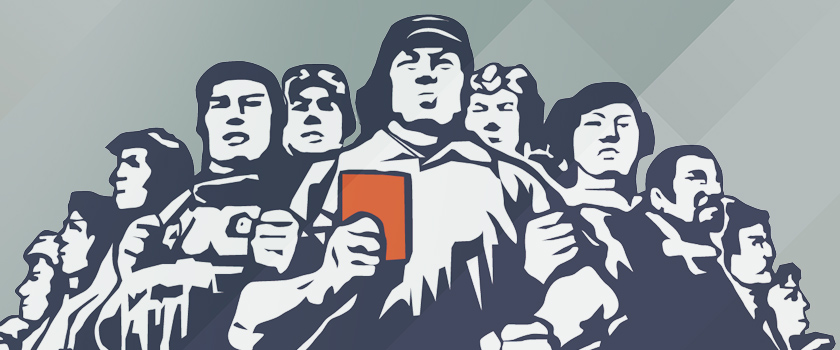Inevitably, a large part of this will be invested in passive index funds and funds that are active in name but mostly passive in practice. One problem this creates is the increasing exposure of investors to state owned enterprises (SOEs) which have a large weight in standard market cap weighted EM indices. We try to explain why this constitutes a risk for investors by focussing on Chinese SOEs.
These companies mostly date from the 1950s when private businesses and infrastructure was nationalised by the Communist party. During the 1980s and 1990s local factories were spun off from ministries to create SOEs. After the reforms of the late 1990s, the most inefficient and debt burdened ones were closed, merged or acquired. The companies remaining in the so called “Pillar Industries” were made the national champions.
While these SOEs may appear profitable on surface, according to a 2012 study by the Unirule Institute of Economics, the most powerful SOEs lost money from 2001 to 2009 when the subsidies they received were taken in to account. Recently they have come under focus again as their debt levels steeply increased after the stimulus program of China.
Rising debt in Chinese SOEs is not an isolated problem and could have negative implications for the global economy. This is why the IMF recently issued a warning on the risk from China’s rising debt burden and urged aggressive action to curb credit growth and subject SOEs to the discipline of the market. Furthermore, the IMF recommended China create a task force that would help restructure SOEs to recognise and address over capacity in the industrial sector.
Today, around 65% of the Chinese stocks in the MSCI GEM index are SOEs across a wide range of sectors including consumer, energy, financials, industrials, materials, utilities and telcos. Our internal calculations using Bloomberg data show that, over the last 12 months, the return on equity (ROE) for SOEs has been 12% versus 16% for the private sector. In order to check if this was a temporary situation we also looked at 3 and 5 year history. The difference is even more striking over the long term. Over a 3 years period, SOEs’ ROE was 13% versus 18.7% for the private sector. Over 5 years the respective figures were 12.9% and 18.9% respectively.
What do these ROE differentials mean for valuation and shareholder returns? Based on our cost of equity estimates and other things being equal, a company with 18.9% ROE would trade at a 46% price to book premium compared with a company generating 12.9% ROE. In other words, these companies are destroying a lot of value for their shareholders.
What is more worrying is that SOEs have achieved lower ROEs despite higher debt levels. Based on the latest financials available, the median debt to equity ratio of the SOEs at 88% is significantly higher than private sector corporates at 60%.
One way to adjust for the impact of higher leverage on returns is to look at the return on assets (ROA) rather than ROE. Here, we can see that the difference is even higher than what ROEs would suggest. Based on the last 12 months financials, ROA of Chinese SOEs was 2.8% versus 4.5% for private sector. Once again, the long term differentials are even more striking with a 3 years median ROA of 3.3% for SOEs versus 5.7% for private sector. The 5 year figures were 3.1% and 6.5% respectively.
Another example comes from the Indian financial sector. The Reserve Bank of India estimated that stressed assets — including restructured as well as non-performing loans — amounted to 17% of assets at the state-controlled banks, which account for about three-quarters of total banking assets. As a result of this, stressed assets constitute 14% of India’s total banking system. For private banks the situation is a lot better with stressed assets making up around 5% of their assets. State banks are generally perceived as more vulnerable to political pressure which may be the reason behind the poor lending practices.
The RBI report warned that the distressed asset crisis was weighing heavily on credit growth, which stood at only 4 per cent for the state-owned banks in March 2016, compared with 25 per cent for private sector banks.
Elsewhere, the recent political scandal in Brazil surrounding Petrobras which led to the collapse of the government as well as the collapse of the share price of Petrobras highlights another angle of the risks involved. It is possible to extend the examples across the Emerging Markets universe.
Increasing interest in EM, potential inclusion of China A shares in the future, rising share of passive investing and the existence of benchmark hugging active managers could lead to the risk of investors’ portfolios being increasingly exposed to these inefficient companies. We strongly believe investors and managers should focus on solutions to reduce this risk.
Lire l'article original en français

Eli Koen
Head of Emerging Europe Equity

